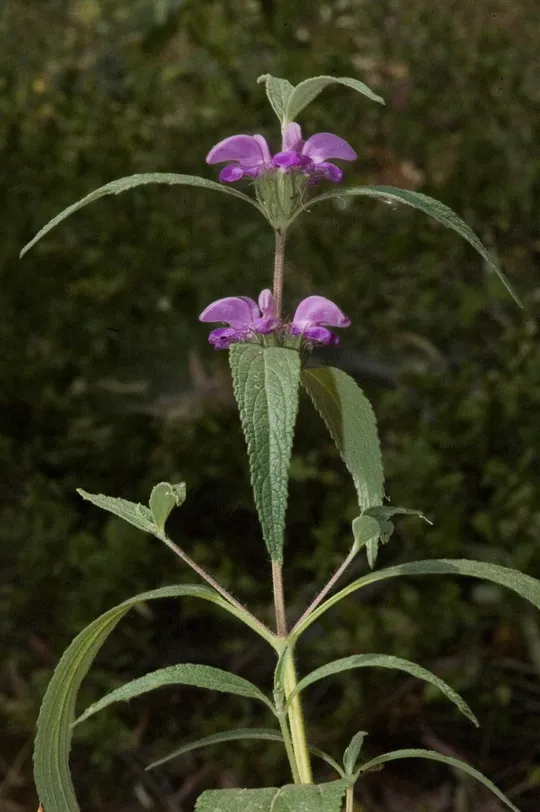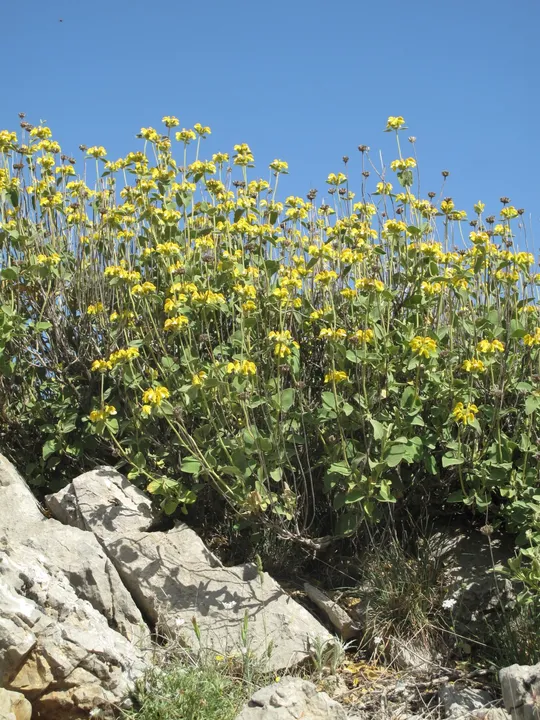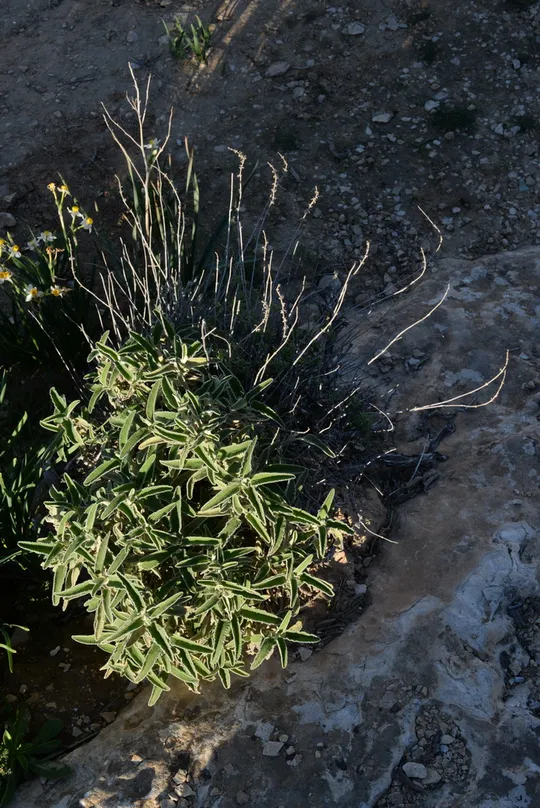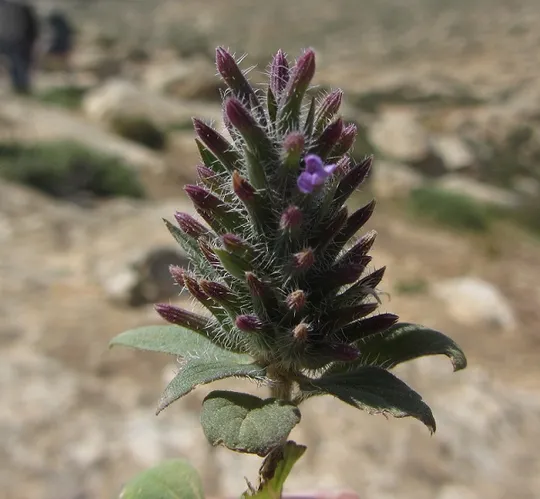Syrian Phlomis
Phlomis syriaca

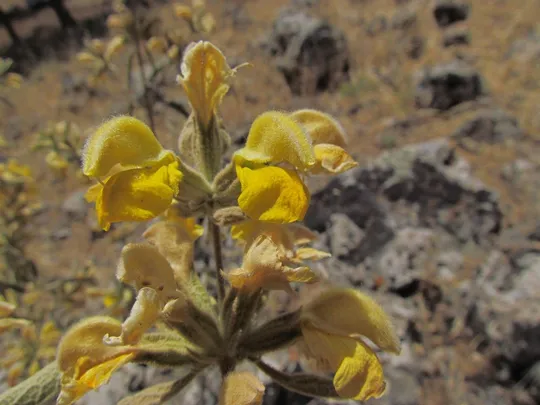
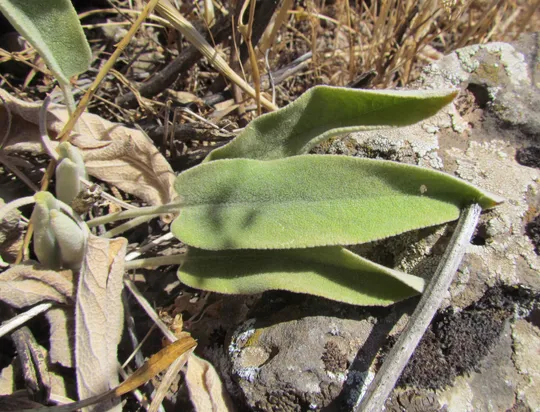
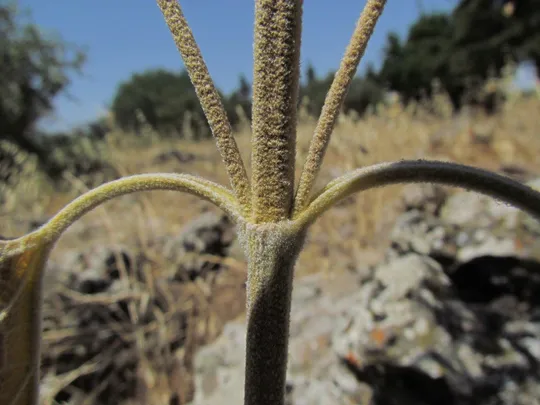
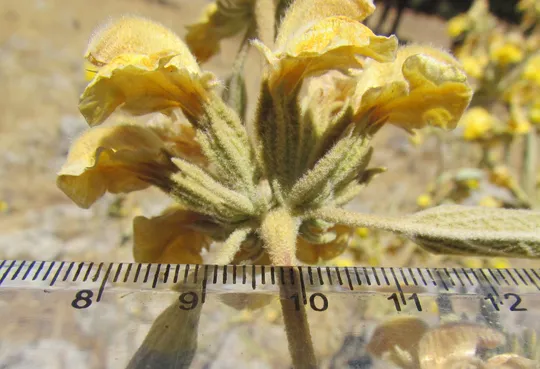
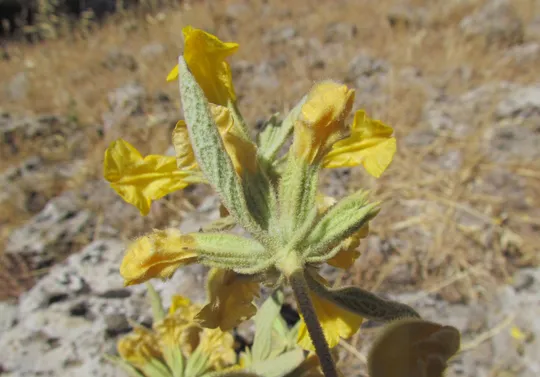
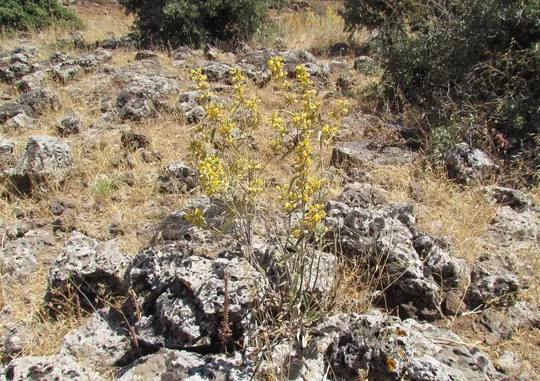
Phlomis syriaca once grew at two sites near Mount Shifon in the northern
Golan Heights, although it became extinct due to intensive agricultural
development. Aviva Rabinovich found it for the first time in Israel in 1974
(Rabinowitz, 1984). Since then the species was found in the Mount Shifon region
at two different sites at altitudes of 760 to 820 meters (Yair Or, 1989).
Efforts to locate it again were unsuccessful – the plant became extinct
probably due to agricultural development in the region.
Tuff slopes and
basalt rivulets in the northern Golan Heights.
The genus Phlomis has a number of
species found mainly in the Mediterranean and Irano -Turanian regions. Its
center of diversity is in Turkey where 34 species grow. In the entire Middle
East 69 species grow.
P.
syriaca belongs to the P. brevilabris
sub-section Gymnophlomis Bentham, which has 4-8 (10) flowers in each whorl. This group is made up of perennial,
herbaceous plants that have delicate short lanceolate or narrow linear bracteoles.
The species in the group create round 40-90 cm in diameter cushions of joined rhizomes
from which many stems rise. The yellow flowers turn brown following fertilization
and remain on the plant for a long time after flowering. The species of the
group dominate the montane transition zone shrublands of the Fertile Crescent
and create a series of vicarious species that replace each other at different
topographical altitudes and degrees of latitude and longitude. Four species of
this group grow in the Levant and it is sometimes difficult or even nearly
impossible to distinguish between them: P. brevilabris dominates the Mount Hermon peaks; it
is replaced by P. brachyodon in the transition zone shrublands of the eastern
Galilee, Judea and Samaria to the Negev Highlands. In Syria (including Jabal
Druze and a single spot on the Golan Heights) P. syriaca grows and it
penetrates to the southeastern corner of Anatolia. In Ammon, Moab and Edom in
Jordan three species of Phlomis from this group are noted in the literature: P. kurdica, P.
syriaca and P. brachyodon.
We were unable to distinguish between these species, noted from Transjordan, in
the field, for the diagnostic features of the leaf hairs and calyx teeth shape
are mixed within the populations. It may be possible to try to distinguish
between species with the help of other features – P.brachyodon has a heart-shaped leaf base
while in P. kurdica the leaf base is ovate. In P.
syriaca the leaves are
elongated, narrow and long (8-14 cm compared with 4-7 cm in other species) and awl-shaped
at their base; this is a much taller plant (70-100 cm) than the other species,
with widely spaced flower whorls, which according to the literature has compacted leaf hairs. According to A.
Rabinowitz, P. syriaca flowers have a bright yellow hue, compared to
the faded yellow hue in other species. Despite the great difficulty in
differentiating between the species in the P. brevilabris group, it is nevertheless
interesting and important to study them: they probably represent contemporary speciation
processes of the ancient taxon that was previously found throughout the Levant taking
place before our very eyes. When the climate in the area became warmer and
dryer during the Holocene Period the different populations were separated and
each one underwent a process of local speciation.
Phlomis syriaca is extinct from
the only site on which it grew, probably as a result of agricultural
development. It does not appear in the red plant lists of other countries in its
range.
Efforts should
be made to reintroduce Phlomis syriaca from
Syrian sources (if possible) to volcanic hills sites in the northern Golan
Heights. The eastern Golan Heights should be surveyed to try and locate new populations.
Phlomis syriaca is found in Moab and Gilead in Jordan
(according to the Flora Palestina). According to the Flora of Turkey – Syria
and southeastern Turkey.
Phlomis syriaca is an herbaceous perennial that was discovered only at a
single site in the northern Golan Heights late in the 20th century and has since
become extinct from there.
רבינוביץ א. 1984. מציאות בהר-שיפון. רתם 11: 68-69.
Current Occupancy Map
| 1000 squre meter pixel | 5000 squre meter pixel | 10000 squre meter pixel | |
|---|---|---|---|
| number of observations | 0 | 0 | 0 |
| in total pixels | 0 | 0 | 0 |
| Family | Lamiaceae |
| Classification | On the endangered species list |
| Ecosystem | Semi-Steppe Belt |
| Chorotype | Western Iranian – Turanian |
| Conservation Site | Reintroduction to Mount Shifon |
| Rarity |
1
6
6
|
|---|---|
| Vulnerability |
0
0
4
|
| Attractiveness |
0
1
4
|
| Endemism |
0
0
4
|
| Red number |
1
3.7
10
|
| Peripherality | 0 |
| IUCN category | DD EW EX LC CR EN VU NT |
| Threat Definition according to the red book | Vulnerable |
 Based on:
Based on:
